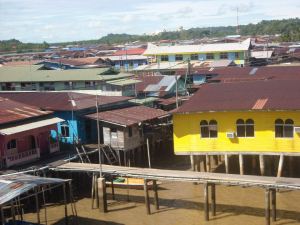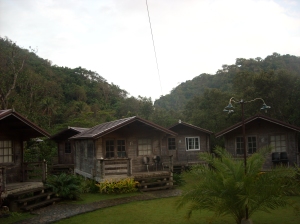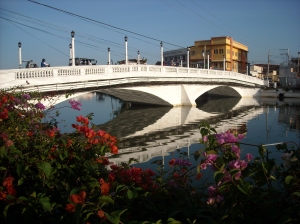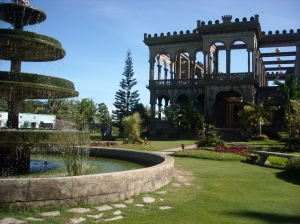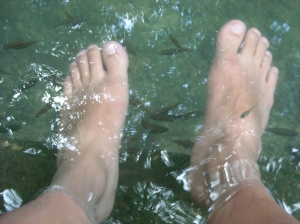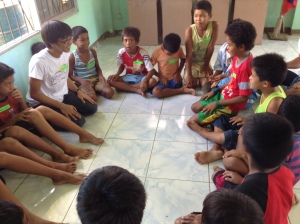The chilly wind blew against my skinny frame. I was just wearing a thin long-sleeved shirt with a scarf wrapped around my neck but I welcomed the cold. This is really not new to me. After all, my hometown, Baguio, is also cold.
I took a deep breath. The smell reminded me of England. My eyes became busy trying to take in all the details of my surroundings – the color, the structure, how things are arranged; my senses on a hyperactive mode as I want to re-create the image in my mind when I’m not in the place anymore.
Autumn in Japan is how I have visualized it. Trees changing its color, leaves gently falling like feathers, people rushing by in their gray and glum coats in consonance to the season.
My mates and I took a stroll around Tokyo. Where are the people? So empty. Deserted. Then I realized it’s around 8:00 AM. It’s Wednesday. People obviously are in their offices and their workplaces. We took pictures of anything and everything. Like a typical tourist would do. Pictures of trees, rocks, people, places, of each other. Serious pose, model-esque, wacky or free style. The locals would stare, maybe wondering why, in the world, are we taking pictures of signage, buildings, stores, etc. But for someone new in a place, everything is fascinating.
Lunch time came. People started emerging from their nooks and began to line up in restaurants. They are so… behaved, not impatient at all. No complaints about the long queue. And they eat their food in peace, without so much chatter, which is the complete opposite of what most Filipinos do.
We managed to order our food. Thanks to the universality of gestures and body language. We would point to the menu. The waitress would speak to us in Japanese. We would nod in agreement thinking, hoping, we understood.
“Itadakimasu!” I love saying that all the time. It’s the Japanese way of showing appreciation for the food. Trying out the cuisine of other countries is exciting. For me, the first bite can be a surprise, a pleasant one or otherwise.
“Oh, that’s a familiar taste. Similar to what we have back in the Philippines.”
“I can have this for breakfast, lunch, and dinner!”
“Er, I think I’ll eat something else, thank you very much…”
Japanese food is very simplistic. A reflection of how the people are like. The Japanese, in fact, are minimalist. Their flag as a big statement of that, and I really appreciate that about them. I’m also amazed at how they do things, like everything’s all planned out, no room for mistakes, so efficient… so Japanese. And talking about being precise, being late would be unacceptable. It’s not even about being right on time. You have to be there 15 minutes before an appointment or else you would be considered late.
I have observed the way they work. Now I know why most concepts on quality in the workplace which we study in my Management Class originate from Japan. For a result-oriented person like me, the Japanese work ethic is ideal which I wish to see in companies and organizations I would want to be a part of in the future.
***
The five-hour Shinkansen trip from Tokyo to Nagano Prefecture wasn’t as eventful as I hoped it to be. Nagano is this quiet, peaceful place where I met my new family. Yes, we’ll be having homestay here, a chance to get to experience the real culture of Japan! The Yazawa family welcomed me, together with an Obama look-alike Indonesian lad, Jusak. We stayed with the family for the two nights and two days.
At first, I was concerned about the language barrier. The only Japanese I knew, aside from itadakimasu were ohayo (good morning), konichiwa (good afternoon/hello), konbanwa (good evening), ogenki desu ka (how are you), and arigato (thank you). So how in the world would I be able to communicate to them?
Surprisingly, I was able to connect well with the Yazawas – the grandparents, Boss and Baba; our homestay mom and dad, Shinya-san and Yumi-san; and the kids, Tatsuki, the quiet one, Hana, the bundle of energy young girl, and Keita, the curious little boy.
Baba would speak to me in Japanese, I would answer back in English and for some reason, we would understand each other. I showed pictures and talked about the Philippines. They did the same thing sharing their culture and I could feel their genuine interest in getting to know me more.
We discussed and compared how things are culturally done. Whoever gave us the idea that people from another country would be any different? I mean, yes there are little nuances here and there but that’s all there is to it. Big differences if you wish to see it that way but for me, I see it simply as diversity.
We walked around the neighborhood, had soba for lunch (noisy slurping required), went to a monkey park, had a feast for dinner and ended the day with conversations, music, and laughter. I hated to think that we’ll be saying good-bye the following morning.
And so the day came. The inevitable. We had to bid farewell to strangers turned family, whom we have met for such a short time but felt like we’ve known each other longer. I hugged everyone and when it came to my oka-san (mother), she started crying and then tears began falling from my eyes, too.
“Don’t cry…” I said, which was funny because I was also crying. People call me cold-hearted because I don’t usually show my emotion specially when saying good-bye. But I don’t know what happened that day. Maybe they were tears of gratitude for the warm Yazawa family, for sharing their home, their lives to me, even for a brief moment.
Home is where the heart is. I certainly left a piece of mine back in Nagano.



